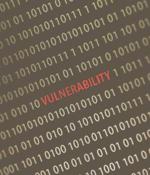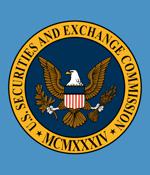Security News

SonicWall says it has observed thousands of daily attempts to exploit an Apache OFBiz zero-day for nearly a fortnight. If you use the Apache Software Foundation framework, which includes business process automation apps and other enterprise-friendly functions, you should upgrade to OFBiz version 18.12.11 immediately to patch both this and a second, equally serious hole.

The U.S. Securities and Exchange Commission's new rules around disclosure of cybersecurity incidents go into effect on Dec. 15 for public companies with fiscal years starting on or after that date.Now, those organizations are asking what they need to alter or enhance about their disclosure procedures, incident response and existing cyber capabilities.

The most notable example is the US Securities and Exchange Commission's new rules on cybersecurity risk management, strategy, governance and incident disclosure. The new disclosure rules are designed to provide investors with a greater understanding of the risks a listed company faces from cyber threats and the level of controls in place to mitigate that risk.

The conversation also touches on the broader ethical considerations in cybersecurity and the impact of emerging technologies on vulnerability disclosure practices and offers advice for cybersecurity professionals grappling with these critical decisions. Some might argue that in the interest of the public, public disclosure is the most ethical approach as it ensures the issue is closed as quick as possible.

Flaws in the vulnerability disclosure process of open-source projects could be exploited by attackers to harvest the information needed to launch attacks before patches are made available, Aqua Security researchers worry. "Half-day" vulnerabilities are known to the maintainer and information about them is publicly exposed on GitHub or the National Vulnerability Database, but there's still no official fix.

With the help of the wallet, the user can limit the disclosure of his data to those attributes that are necessary for the provision of the service, e.g., a user's legal age or a successfully completed university degree. This selective disclosure enables an individual to share parts of a larger data set.

While the CRA doesn't demand companies forward an exploited vulnerability's full technical specifications to ENISA, it does require companies to report on a vulnerability "With details"-and these details could be more than enough to attract the attention of a savvy attacker. As the CERT Guide to Coordinated Vulnerability Disclosure puts it: "Mere knowledge of a vulnerability's existence in a feature of some product is sufficient for a skillful person to discover it for themselves."

A Russa-nexus adversary has been linked to 94 new domains, suggesting that the group is actively modifying its infrastructure in response to public disclosures about its activities. Cybersecurity...

The US Securities and Exchange Commission adopted final rules around the disclosure of cybersecurity incidents. There are two basic rules: Public companies must “disclose any cybersecurity...

As you can imagine, especially in an online world in which ransomware breaches can bring a company to a digital standstill overnight, and where even coughing up a multimillion-dollar blackmail payment to the attackers for a "Recovery program" might not be enough to get things going again. Ransomware attacks these days frequently involve cybercriminals stealing copies of your trophy data first, notably including employee and customer details, and then scrambling your copies of those very same files, thus squeezing you into a double-play cybersecurity drama.